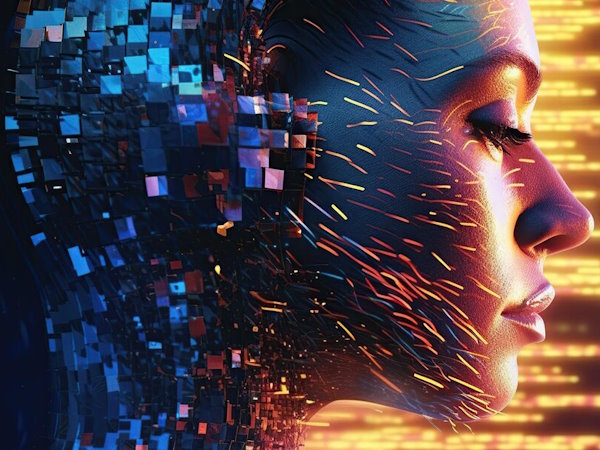Harnessing AI Images In Your Website
As technology continues to advance, designers are now exploring innovative ways to leverage AI generated visuals to enhance aesthetics, improve loading times, and provide a personalised user experience.
In this article, we’ll delve into the fascinating world of AI images and explore how they can be effectively utilised in web design.
The Rise Of AI Images
Traditional web design often relies on static images, icons, and graphics. However, the rise of AI has ushered in a new era where designers can tap into the potential of machine learning algorithms to generate images dynamically.
This not only reduces the need for pre designed assets but also allows for the creation of unique and customisable visuals tailored to specific user preferences.
Enhancing Aesthetics & Creativity
One of the most exciting aspects of incorporating AI images into web design is the boost it provides to creativity.
AI algorithms can analyse vast datasets of images to identify patterns and generate innovative designs. This means designers can experiment with a myriad of styles, colour schemes, and compositions to create visually striking and original content.
AI can also assist in generating realistic textures, gradients, and intricate details that might be challenging or time consuming for a human designer to create manually. By automating these processes, web designers can focus more on the conceptualisation and artistic aspects of their projects, pushing the boundaries of what is visually possible on the web.
AI Images Simply Look Incredible
Optimising Load Times
In the fast paced digital era, users expect websites to load quickly and seamlessly. Large image files can significantly impact loading times, leading to a poor user experience and potentially higher bounce rates. AI comes to the rescue with advanced image compression techniques that maintain image quality while reducing file sizes.
AI powered image compression algorithms use machine learning to analyse and understand the content of an image. This allows for more efficient compression, ensuring that the visual integrity of the image is preserved while minimising the amount of data that needs to be loaded. As a result, websites can deliver high quality visuals without compromising on speed, catering to the demands of today’s internet users.
Personalisation For A Unique User Experience
Web design is increasingly moving towards providing personalised experiences for users. AI images play a pivotal role in achieving this by dynamically generating content based on user preferences, behavior, and demographics. From personalised product recommendations to customised visuals that resonate with individual users, AI images contribute to creating a unique and engaging online experience.
Machine learning algorithms can analyse user interactions and preferences, tailoring the visuals presented to each visitor. This level of personalisation not only enhances user engagement but also increases the likelihood of conversions. By creating a more relevant and user centric design, websites can build stronger connections with their audience, fostering loyalty and trust.
Integrating AI Images Into Unique Responsive Design
The proliferation of various devices and screen sizes makes responsive design a crucial aspect of modern web development. AI images seamlessly integrate with responsive design principles, adapting dynamically to different screen sizes and resolutions. This ensures that the visuals on a website remain captivating and cohesive, regardless of whether they are viewed on a desktop, tablet, or smartphone.
Machine learning algorithms can analyse the context in which an image is being viewed and make real time adjustments to optimise its presentation. This adaptability is invaluable in providing a consistent and enjoyable user experience across a wide range of devices, contributing to the overall success of a website in today’s multi device landscape.
Overcoming Design Challenges
Designing for accessibility is a key consideration in web development, and AI images can assist in overcoming some of the challenges associated with creating inclusive designs. AI algorithms can analyse content and generate alternative text descriptions, helping make websites more accessible to users with visual impairments.
Additionally, AI powered design tools can assist designers in creating interfaces that prioritise usability and navigation for all users. By automating certain design decisions and considering accessibility from the outset, web designers can ensure that their creations are inclusive and welcoming to diverse audiences.
Future Trends & Considerations
As technology continues to advance, the role of AI images in web design is poised to grow even further. From augmented reality (AR) integration to 3D modeling and immersive experiences, the possibilities are vast. Designers should keep an eye on emerging trends and continuously explore how AI can be harnessed to push the boundaries of creativity and functionality in web design.
However, it’s essential to approach AI integration with a thoughtful and ethical mindset. Designers must be conscious of the potential biases in AI algorithms and work towards creating inclusive and unbiased designs. Moreover, user privacy and data security should be prioritised to build trust with website visitors.
My Conclusions
The integration of AI images in web design represents a groundbreaking shift in the way we approach visual aesthetics, loading times, and user experiences. By leveraging the power of machine learning, designers can unleash their creativity, optimise loading times, and provide personalised and inclusive experiences for users.
As technology continues to advance, the synergy between AI and web design holds the promise of even more exciting and innovative developments, shaping the future of the digital landscape. Embracing these advancements will not only set websites apart in terms of design but also contribute to a more seamless and enjoyable online experience for users worldwide.





